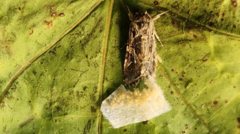In a groundbreaking discovery, scientists from Tel Aviv University have revealed that certain animals, such as female moths, can react to sounds emitted by stressed plants, shedding light on a previously unseen ecological interaction between flora and fauna. This research supports the theory that an invisible communication network exists among species in nature.
The study focuses on the response of moths to tomato plants making distress noises—a phenomenon that previous studies had already suggested: plants "scream" when facing distress, producing sound frequencies undetectable to the human ear, yet audible to various insects, bats, and perhaps even some mammals. Professor Yossi Yovel, who leads the research, emphasizes, "This is the first demonstration ever of an animal responding to sounds produced by a plant," prompting inquiries about how much more of the ecosystem remains to be understood.
In controlled experiments, the team observed that the female moths avoided laying their eggs on tomato plants producing sounds of distress, indicating their preference for healthier vegetation. This behavior raises intriguing questions about the decision-making processes of different animals concerning plant health. Prof. Yovel suggests that a variety of species might respond to these acoustic signals, potentially affecting their actions—be it pollination, taking shelter, or foraging.
The researchers also express interest in whether plants can communicate with one another through sound, enabling responses to environmental stresses like drought. Prof. Lilach Hadany notes, "If a plant is stressed, other plants are most concerned about it, leading them to adapt via various responses."
Despite the fascinating implications of this research, the scientists clarify that while plants produce sounds due to physical changes in their environment, they are not sentient beings. These findings could suggest a co-evolution of auditory communication between plants and animals, where both evolve to enhance their respective survival strategies.
This expansive territory of sound-based interactions has only begun to be explored. The experiments focused specifically on moths, which typically lay their eggs on tomato plants, aiming for the healthiest options for their larvae's development. The results, published in the journal eLife, serve as a significant stepping stone in understanding the complex interactions within ecosystems and the potential of auditory communication across species.
The study focuses on the response of moths to tomato plants making distress noises—a phenomenon that previous studies had already suggested: plants "scream" when facing distress, producing sound frequencies undetectable to the human ear, yet audible to various insects, bats, and perhaps even some mammals. Professor Yossi Yovel, who leads the research, emphasizes, "This is the first demonstration ever of an animal responding to sounds produced by a plant," prompting inquiries about how much more of the ecosystem remains to be understood.
In controlled experiments, the team observed that the female moths avoided laying their eggs on tomato plants producing sounds of distress, indicating their preference for healthier vegetation. This behavior raises intriguing questions about the decision-making processes of different animals concerning plant health. Prof. Yovel suggests that a variety of species might respond to these acoustic signals, potentially affecting their actions—be it pollination, taking shelter, or foraging.
The researchers also express interest in whether plants can communicate with one another through sound, enabling responses to environmental stresses like drought. Prof. Lilach Hadany notes, "If a plant is stressed, other plants are most concerned about it, leading them to adapt via various responses."
Despite the fascinating implications of this research, the scientists clarify that while plants produce sounds due to physical changes in their environment, they are not sentient beings. These findings could suggest a co-evolution of auditory communication between plants and animals, where both evolve to enhance their respective survival strategies.
This expansive territory of sound-based interactions has only begun to be explored. The experiments focused specifically on moths, which typically lay their eggs on tomato plants, aiming for the healthiest options for their larvae's development. The results, published in the journal eLife, serve as a significant stepping stone in understanding the complex interactions within ecosystems and the potential of auditory communication across species.






















